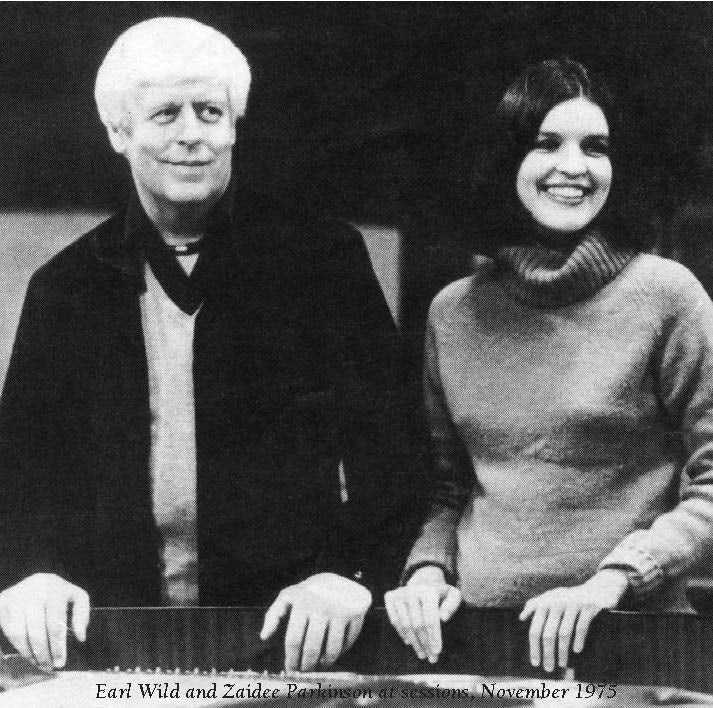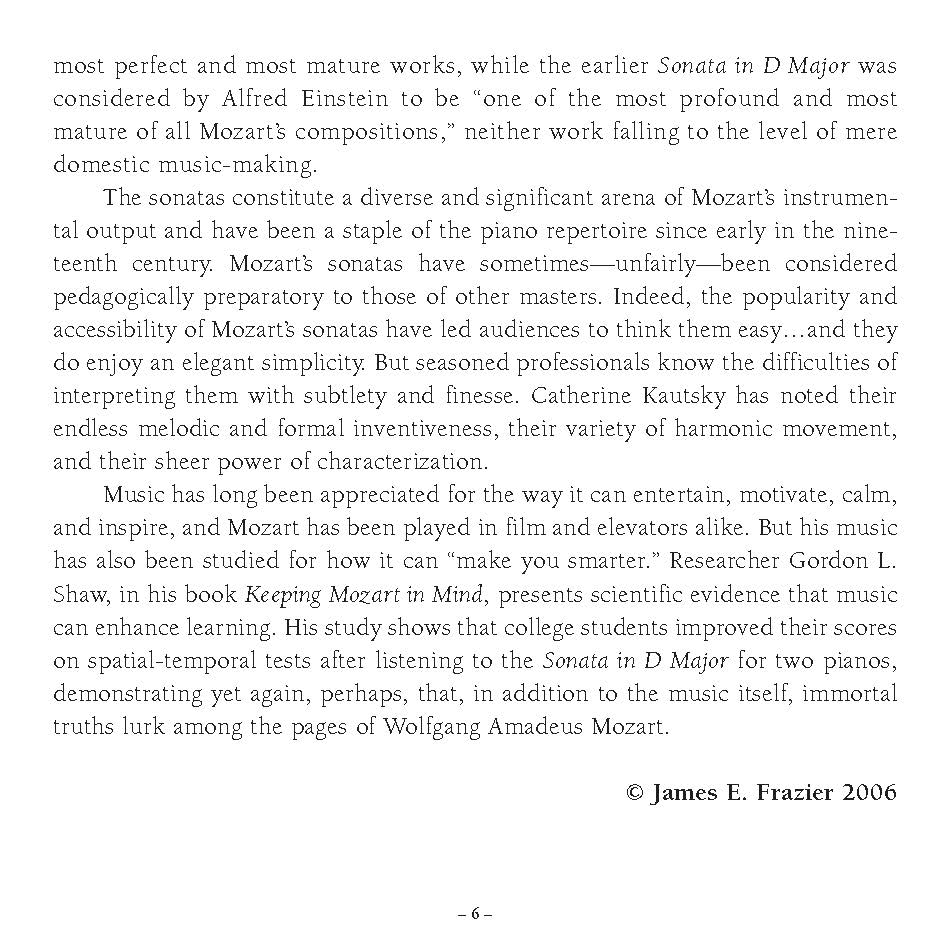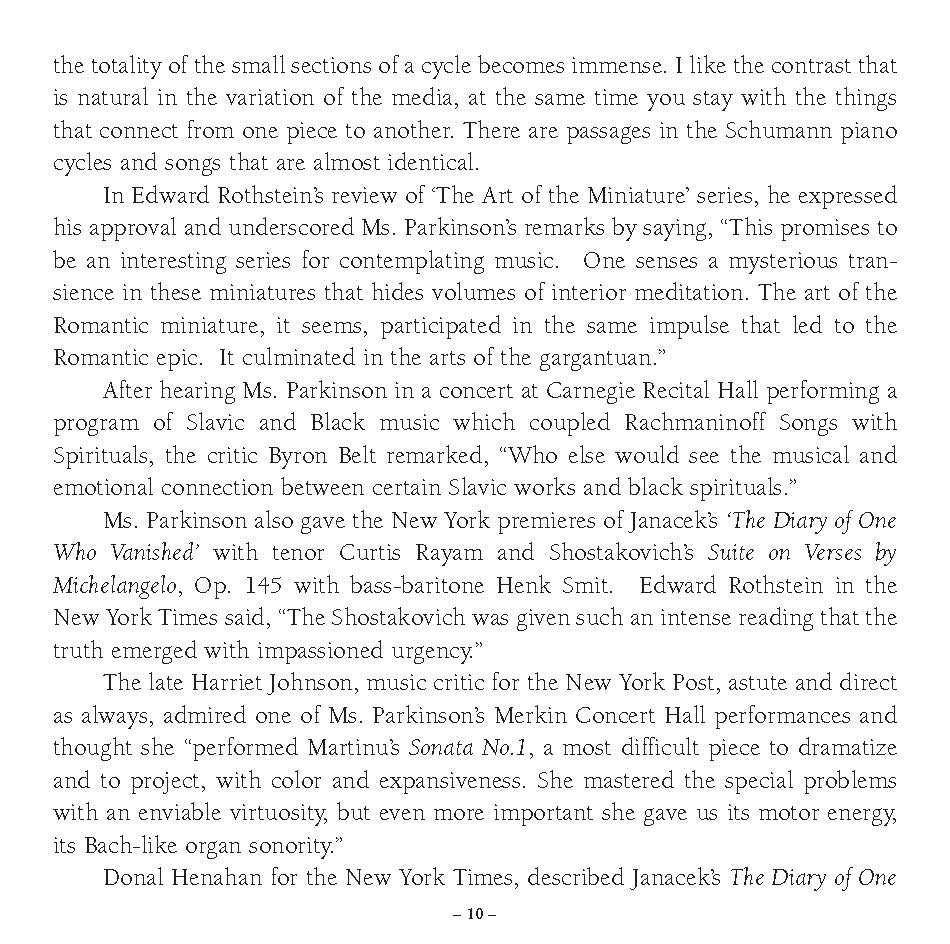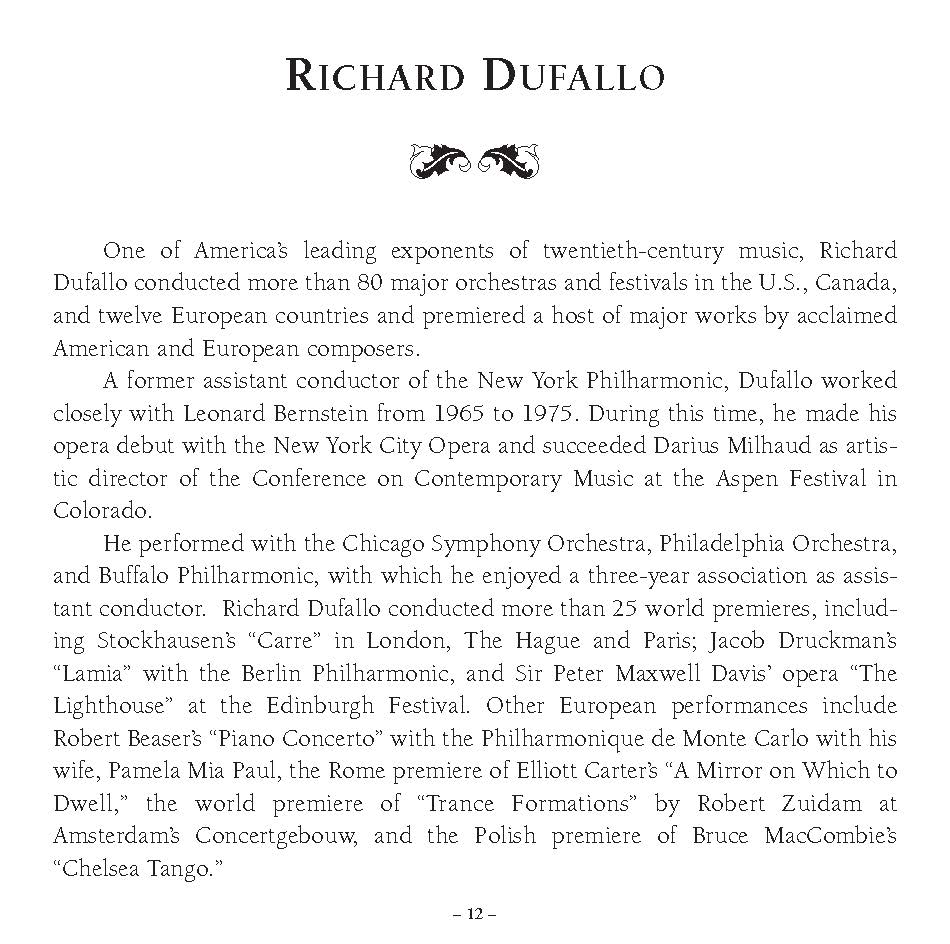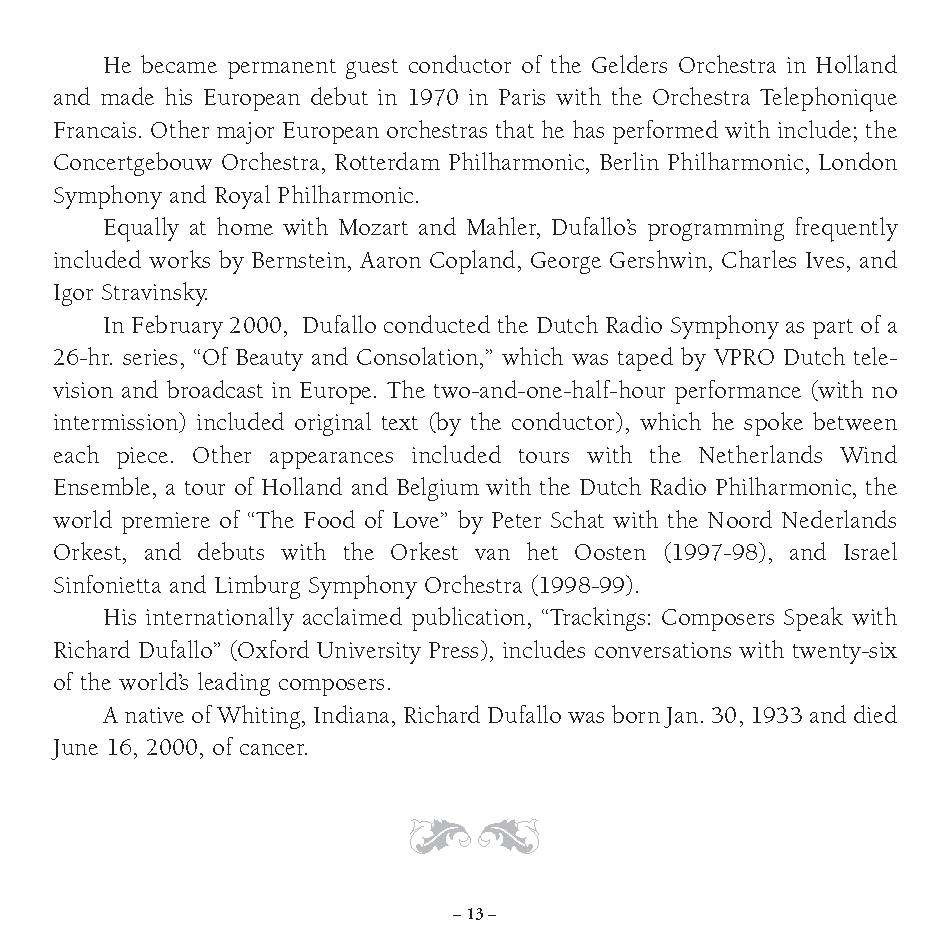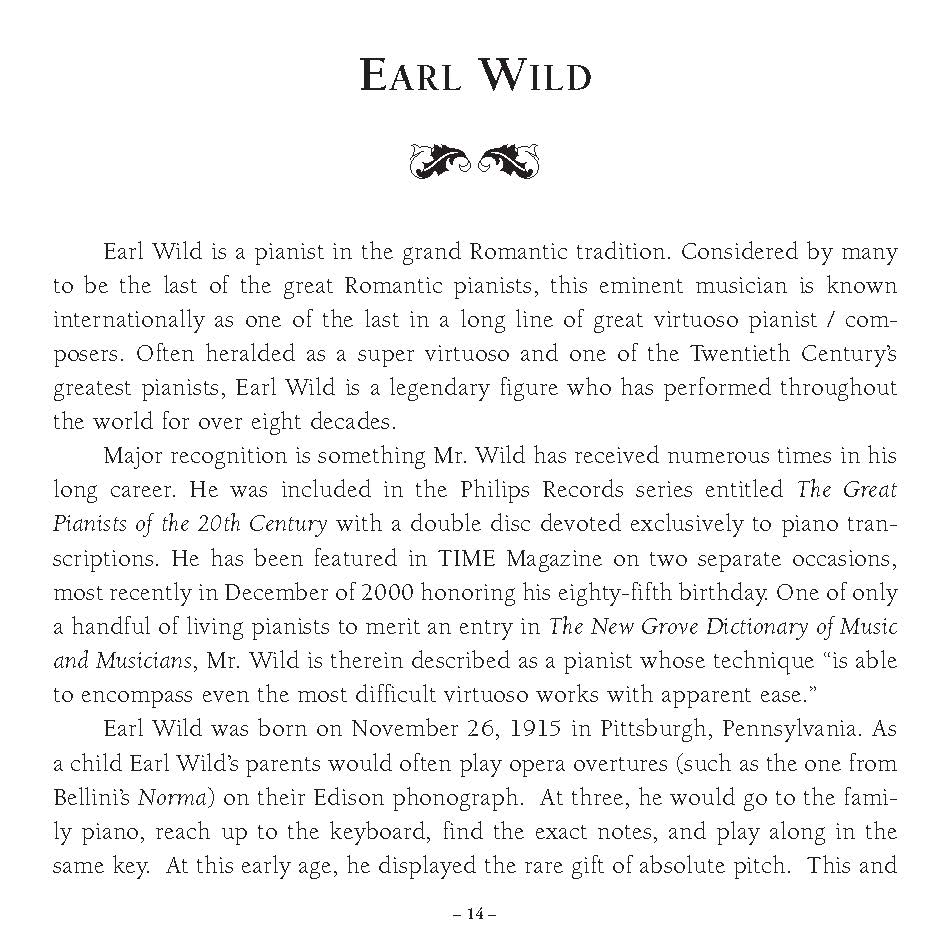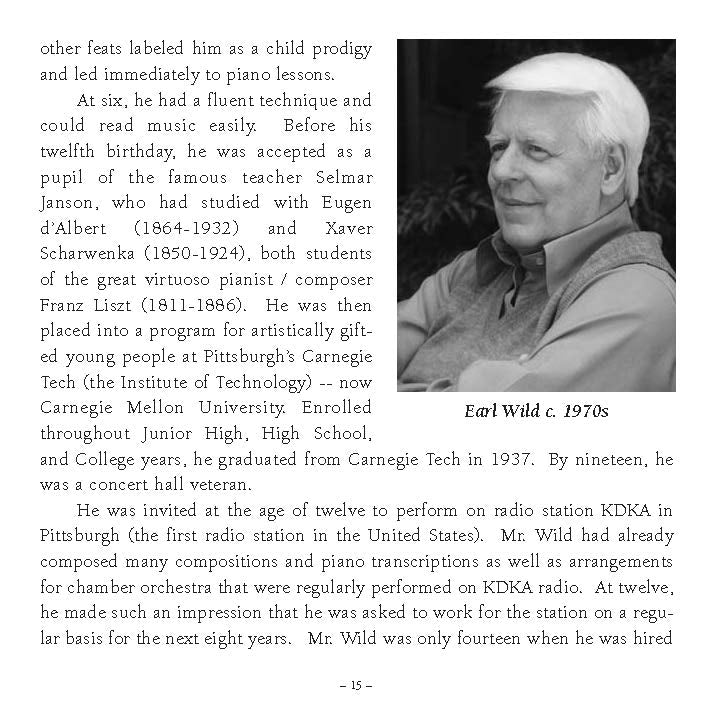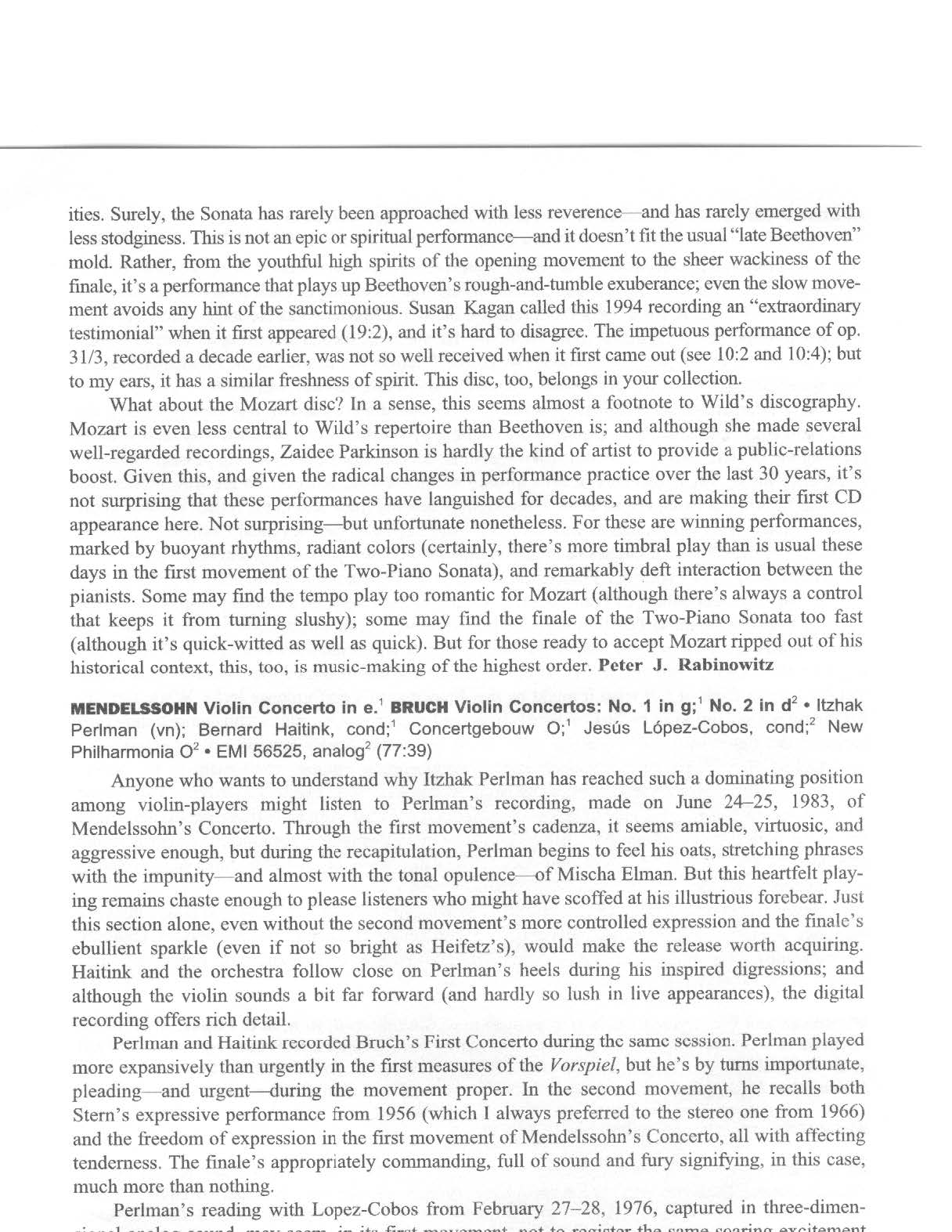1
/
of
26
Earl Wild & Zaidee Parkinson: Mozart Music For Two Pianos
Earl Wild & Zaidee Parkinson: Mozart Music For Two Pianos
Regular price
$22.00 CAD
Regular price
Sale price
$22.00 CAD
Unit price
/
per
Couldn't load pickup availability
Ivory Classics CD-76002
Wild and Parkinson: Mozart Music for two pianos
Piano: Earl Wild
Piano: Zaidee Parkinson
Orchestra: National Philharmonic
Conductor: Richard Dufallo
Producer: Michael Rolland Davis
Engineer: Ed Thompson
Recorded at Kingsway Hall, London November 1975
Original Producer: Charles Gerhardt
Transfers: Soundbyte Productions, NYC
Remastering Producer: Michael Rolland Davis
Remastering Engineer: Ed Thompson
Pianos: Bosendorfer
This recording was made possible through the support of The Ivory Classics Foundation and Ms. Zaidee Parkinson
Photos of Ms. Parkinson by: Christian Steiner
Liner Notes: James E. Frasier
Design: Samskara, Inc.
Recorded in 1975 and is now available on CD for the first time. Very elegantly refined performances with a large measure of passion and drama. Perfect Mozart. Remastered 24-bit Pow-r recording. (ADD)
Disc.Reviews
One of the latest in Ivory's enticing Earl Wild reissue series returns this ex-RCA (originally a 2 LP) Mozart disc to the catalogue. It was recorded in London, at the Kingsway Hall, in August 1975 and teamed Wild with the young Zaidee Parkinson, who was at the time married to the conductor of K365, Richard Dufallo.
Dufallo is better known as a modern music maven and Wild is not especially known for his Mozart so the sessions could have been hazardous stylistically. In the event, they turned out well. The Concerto was once famously recorded by those titans of the keyboard Emil Gilels and Yakov Zak with the USSR State Orchestra under Kirill Kondrashin, a recording now restored on APR 5664 Early post-war vintage it may have been, with correspondingly dodgy sonics, but it was a reading of tremendous personality and strength with some astoundingly entertaining and anonymous cadenzas. One shouldn't expect the Wild-Parkinson-Dufallo triumvirate to replicate the ethos of that reading of course; theirs is an altogether more genial performance though the conductor does tend to favour some acerbic string tone from the National Philharmonic Orchestra, an ad-hoc band that could turn on sumptuous heft when required, as other recordings have shown.
The slightly brittle sound contrasts rather productively with the two soloists' congenial, vital and imaginative duo playing. The ensemble is fine, the slow movement is poetically inflected and well coloured and all concerned take an energetic tempo in the finale.
The two sonatas fare attractively as well. K497 sports a very slow Adagio introduction and there's plenty of limpid refinement in the Andante. The companion work in D major, K448, is the more exuberant, though controlled with intelligence and finely honed architectural principles. The central movement is spun with elegant restraint and by the time we reach the finale things are ready to rip. They set a very challenging tempo – agreed it's an Allegro molto, but this really is molto with a vengeance.
The sound varies between performances and Ivory hasn't been able to deal with some of the high-level hisses and, elsewhere, a certain dullness; it's a demerit certainly but I don't think it will interfere drastically in appreciating performances of energy, drama and enjoyable finesse.
Jonathan Woolf, Music Web.com, May. 2008
Four hands are sometimes better than two
When the subject is music for two pianos, as in this Mozart recital by Earl Wild and Zaidee Parkinson, you're really talking about three distinct genres, slightly different in texture and emphasis. First, the duet for piano, 4 hands, in which the performers sit side by side at the same keyboard, one playing the treble part, the other the bass. The genre lent itself to intimate music-making in the home and was popular in the 18th and 19th centuries for the opportunities it provided for courtship. The sonata for 2 pianos, on the other hand, has the performers seated at different pianos facing each other and taking their cues from one another, a sort of chamber music for keyboards. Finally, in the concerto for 2 pianos the performers interact with each other and the orchestra, adding another degree of complication.
All three are represented here in this 1975 recording remastered for compact disc by Ivory Classics. First, we hear Mozart's Concerto for 2 Pianos in E-flat, K365, with the National Philharmonic under Richard Dufallo. The composer augmented the usual orchestration with kettledrums and trumpets, the version heard here, adding a good deal of brio. The orchestral execution is not as smooth as one might wish, but all is forgiven when the soloists enter the scene. Ms. Parkinson and Mr. Wild are equally sensitive to the nuances in the music and in each other's performance. Most remarkable here is the Andante, one of those fetching slow movements we associate with Mozart. The work isn't complicated emotionally, just beautiful.
The Sonata in F for Piano, 4 Hands, K497, by contrast, begins mysteriously with a slow introduction, as solemn, indeed tragic, in mood as anything in Don Giovanni. What sort of domestic "hausmusik" is this? But Mozart doesn't keep us in doubt for long, and the opening movement proper swings into an Allegro di molto characterized by a ritornello in which the players engage in truly thrilling passages with repeated notes and halved time-values creating molto excitement. The sheer fun of 4-hand music-making is exemplified here. The slow movement is another Andante, as sublime as the one we heard previously in the concerto. More surprises are still to come in the Sonata in D for 2 Pianos, K448 which begins with a jolly march. Elegant simplicity, in the music and its performance by Wild and Parkinson, is the hallmark of this sonata.
They perform, incidentally, on a matched pair of Bösendorfers. That may seem like sonic overkill in light of the fact that the "authenticity" revival has accustomed us to hearing this sort of music on lighter 18th-century-style instruments. But the Bösendorfer can be an instrument capable of very subtle distinctions of tone, with a richness and a resonance that serve the purposes of Mozart's music very handsomely indeed. Especially as played here.
New Classik Reviews, Jan. 2007

